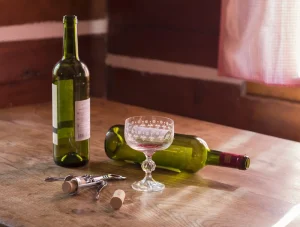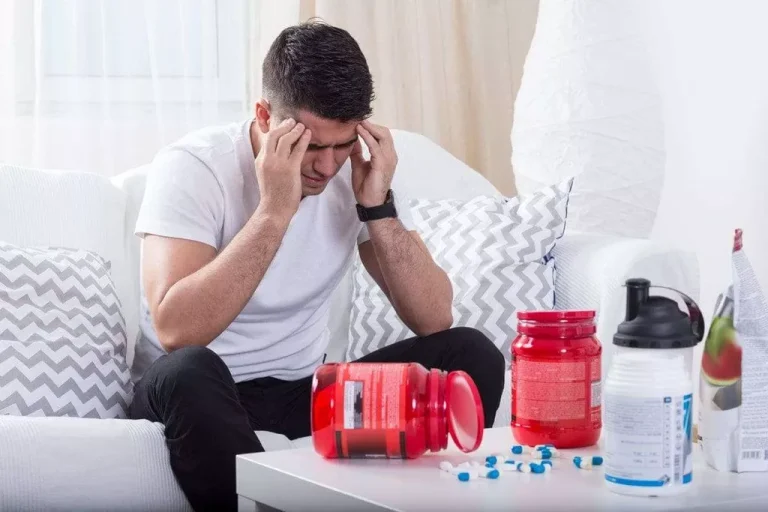Sober Living Recovery Homes: Finding Sober Living Near Me
المحتويات

They’re often in recovery themselves, offering unique insights and empathy based on personal experiences. The specific number of treatment days covered, in- versus out-of-network costs, and coverage for specific interventions often vary per insurance plan. To find out how much of the cost of sober living housing your health insurance will cover, it is best to call your insurance company before committing to a sober living home. Many sober living homes also require residents to pay weekly rent following a one-time move-in fee, according to Robilio. Level IV employs an organizational hierarchy of credentialed staff and adds on clinical and administrative supervision. Level IV services include in-house clinical services and programming and life skill development.

Structure and Rules in Sober Living Homes
- Some residents of Parkersburg, W.V., say their small city is under strain as a result.
- Sober living homes provide a bridge between rehabilitation and returning to the world with a stronger foundation for your sobriety.
- In the journey towards sobriety, the ambiance and the support system around you play pivotal roles.
- Residents are usually required or strongly encouraged to attend meetings and actively work a 12-step recovery program (e.g., obtain a sponsor, practice the 12 steps, and volunteer for service positions that support meetings).
They are environments free of substance abuse where individuals can receive support from peers who are also in recovery. There is no time limit on how long someone can live in a sober living house. While meeting attendance and household duties may be required, there isn’t regimented treatment programming present in the home. Sober living houses are often recommended for folks finishing up a drug rehabilitation program.Leaving the https://ecosoberhouse.com/ structure of a treatment program can be jarring, sometimes triggering a relapse. As such, sober living houses serve as a space to transition into a life without addiction, developing tools and community while getting used to the demands of daily life. Some sober living environment programs around New York City, NY are focused on the college age student, offering alcohol and drug free housing for college students in recovery.
Sober Living Programs for After Drug & Alcohol Rehab
The scale includes a number of items beyond attendance at meetings, including questions about sponsorship, spirituality, and volunteer service positions at meetings. Two additional measures were included as covariates because they assess factors emphasized by as important to recovery in SLHs. This measure was taken from Gerstein et al. (1994) and was defined as number of arrests over the past 6 months. To the best of our knowledge, all content is accurate as of the date posted, though offers contained herein may no longer be available.

Question About Treatment
Only a few steps away from all of Avenues NYC sober livings, the west side of TriBeCa is buffeted by the gorgeous waterfront Hudson River Park. With its famed walking paths and riverfront bikeway, Hudson River Park is the perfect place to take a meditative stroll, practice wellness and exercise routines, or just kick back with a good book. Surrounded by the simple sophistication of New York City’s most desirable neighborhood, Avenues NYC’s TriBeCa sober livings are the perfect place to build a lasting foundation for a happy and healthy life. Avenues NYC offers a wide variety of supportive options to residential and offsite clients to foster growth.
- Here, you’ll find a community of peers who understand your struggles and share your goal of maintaining sobriety.
- Over the years, sober living houses have evolved to meet the needs of those in recovery.
- However, if residents are willing to remain sober, follow all house rules, and guarantee medical stability, they should feel free to apply.
Whether you’re newly sober or looking to strengthen your commitment to sobriety, understanding the role of sober living homes is a vital step in your journey. Sober living refers to a supportive living environment for individuals recovering from addiction. It bridges the gap between inpatient rehab facilities and a return to normal life. You’ll find these homes crucial if you’re in recovery, offering more than just a place to stay; they provide structure, support, and a community of peers who are also on their journey to sobriety. Also like other sober-living environments, halfway houses generally have systems in place to keep residents sober, and drugs tests are usually administered to monitor for any substance use. They also often come with additional mental health, medical, recovery or educational services that help people get accustomed to their new lives.
Recovery Advocacy
This structure helps you build discipline and accountability, key components for a sober life. Sober living homes are structured environments designed to foster recovery and maintain sobriety. Unlike a typical residential home, these settings are tailored to meet the unique needs of individuals recovering from addiction. By understanding the structure and rules that govern these homes, you’re better equipped to select a living situation that aligns with your recovery journey. In some cases, sober living homes will contract with licensed drug rehabilitation centers and therapists as a means for providing an even greater level of care. These types of sober livings do tend to charge higher fees, however, they are often able to provide a very affordable alternative to what would otherwise constitute high-priced inpatient treatment.
The opinions expressed are the author’s alone and have not been provided, approved or otherwise endorsed by our advertisers. Dr. Kennedy also suggests touring the home and asking to speak with current residents or alumni. Smith recommends asking and looking for what sets one SLH apart from the others to make sure its focus and expertise align with your objectives and personality. Others may limit or restrict cell phone and internet access because they can act as triggers that could lead to relapse.

A sober living house (SLH) is a residence for people recovering from substance use disorder. Sober living homes are meant to be safe, supportive environments that emphasize the importance of building a community and camaraderie with others. Individuals typically enter an SLH after being discharged from a clinical treatment center before returning to their previous home and routine. Participants were interviewed within their first week of entering a sober living house and again at 6-, 12-, and 18-month follow up. To maximize generalization of findings, very few exclusion criteria were used and very few residents declined to participate. Primary outcomes consisted or self report measures of alcohol and drug use.
Some residents probably benefit from the mandate that they attend outpatient treatment during the day and comply with a curfew in the evening. For some individuals, the limited structure offered by freestanding SLHs could invite association with substance using friends and family and thus precipitate relapse. This could be particularly problematic in poor communities where residents have easy access to substances and people who use them. In particular, sober living and halfway houses can help somebody maintain recovery by providing a safe, sober environment. Learn more about recovery housing, such as sober living homes, and how it can benefit you on your journey to recovery. A critically important aspect of one’s social network is their living environment.

What is the Difference Between Sober Living and Halfway Houses?
Interviews will elicit their knowledge about addiction, recovery, and community based recovery houses such as SLHs. Their perceptions of the strengths and weaknesses of SLHs in their communities should provide data that can be used to modify houses to improve acceptance and expand to sober living homes serve more drug and alcohol dependent persons. We hypothesize that barriers to expansion of SLHs might vary by stakeholder groups. Drug and alcohol administrators and operators of houses might therefore need different strategies to address the concerns of different stakeholders.
